
Twilight shot. Comparison to F200's EXR signal-to-noise (S/N) improvement mode where it
uses half as many pixels in order to boost the signal-to-noise.
|

Same shot, zoomed in on the gate sign to get an idea of the resolution.
|

Comparison of three F200 modes on a black cat in twilight, which is a challenge.
|

Close-up of the last shot to see the resolution.
|
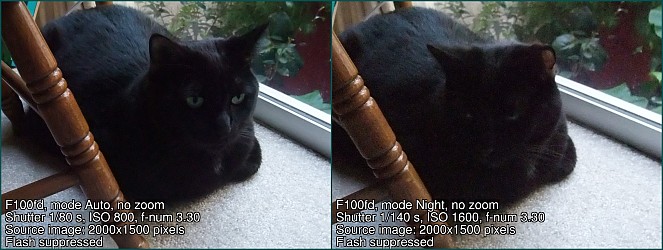
F100 on the same cat, same conditions.
|
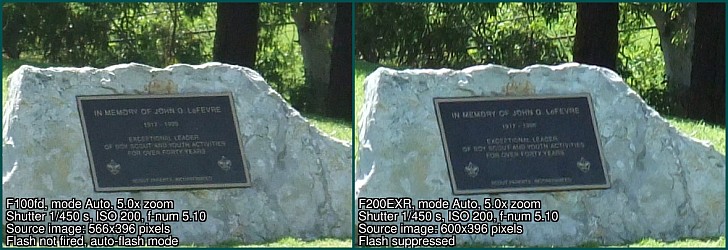
Here, this plaque is about 30 yards away in sunlight, and I have both cameras on max zoom. The image is blown up to max resolution.
|

Obligatory flower shot. I think the F100 shot is just a touch out of focus.
|

Close-up of last shot.
|

Garden shot to demonstrate the EXR's dynamic range (EXR D/R) mode. I didn't notice much
difference among these shots.
|
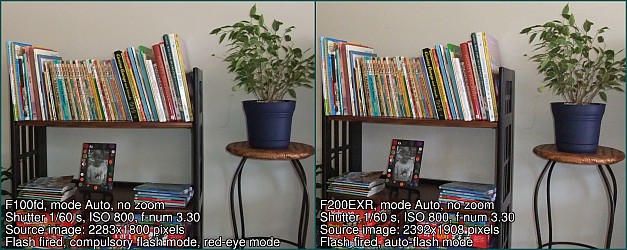
Indoor shot from about six feet with flash.
|
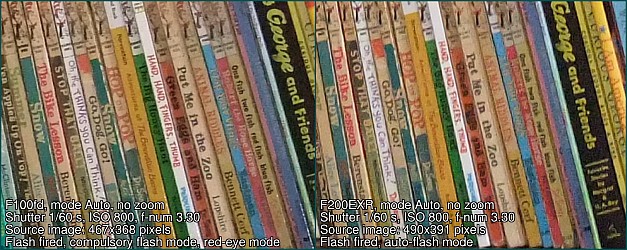
Close-up of last shot. The F100 seems to have better resolution in this case.
|

Flash suppressed this time, and I added the EXR's S/N mode.
|

Close-up of last shot. Again, the F100 seems to have the best resolution.
|

Another dynamic range mode demo. Hard to see significant differences.
|

Close-up on the butterfly from the last shot.
|
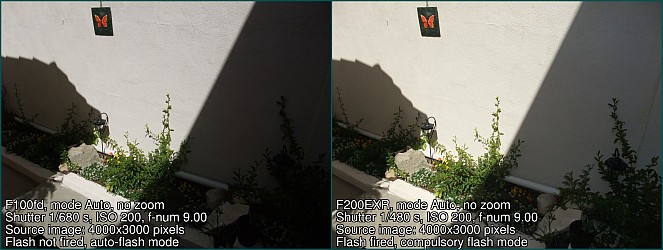
This time with fill-flash.
|
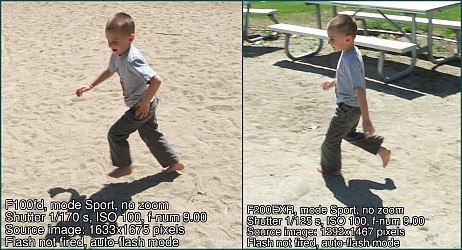
Comparison of sport modes. Not much difference.
|

Another dynamic range mode comparison.
|

This was fun. At the park there was a gopher sneaking out of his hole. I managed to
capture it with both cameras (auto mode, sunlight), which is a small miracle.
|

Here the dynamic range mode really looks a bit different. Look at how much more saturated
the red blanket is in the third frame, for example.
|
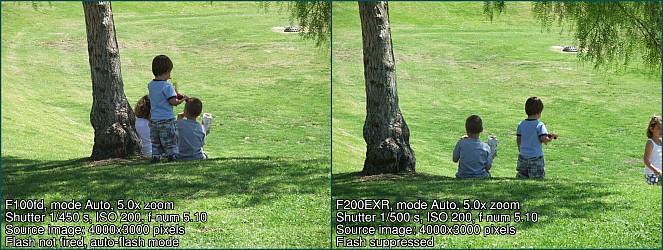
Comparison of auto mode at 5x zoom in sunlight.
|
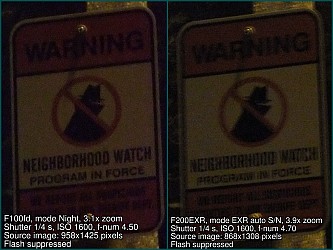
This picture was taken at night under a street lamp. The AF assist lamp was absolutely
critical for focusing. I probably didn't hold the camera as still for the F200 shot.
|
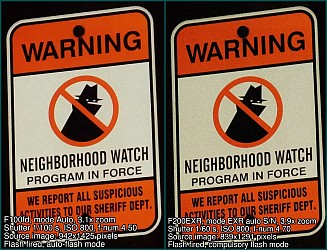
Here's the same sign with flash. Taken from about 4 feet.
|
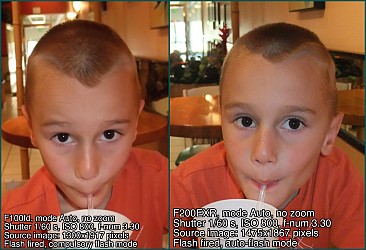
Ambient light, forced flash, auto. I'm a little disappointed that even when sized down
significantly, flash shots on the F200 look "speckled." I understand that Fuji wants to minimize
the flash in order to have the background show up better, but the resulting ISO of 800 doesn't
cut it for me.
|
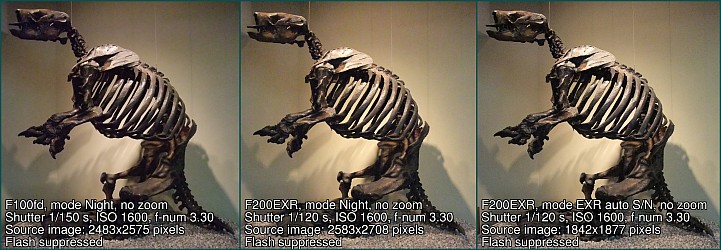
In a museum now, flash suppressed. Comparison to EXR's signal-to-noise (S/N) mode.
|

Same thing, this time with some zoom. Note that the S/N mode does seem to look sharper here,
and it cleans up the yellow background that results in the "auto" mode.
|

Close-up of last shot to demonstrate resolution.
|
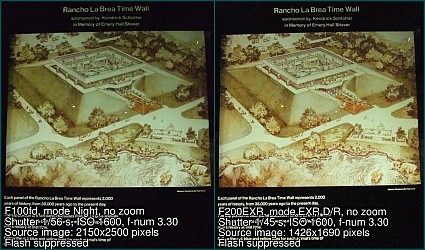
A back-lit sign in a museum, no flash.
|

One more demo of the dynamic range mode.
|




























